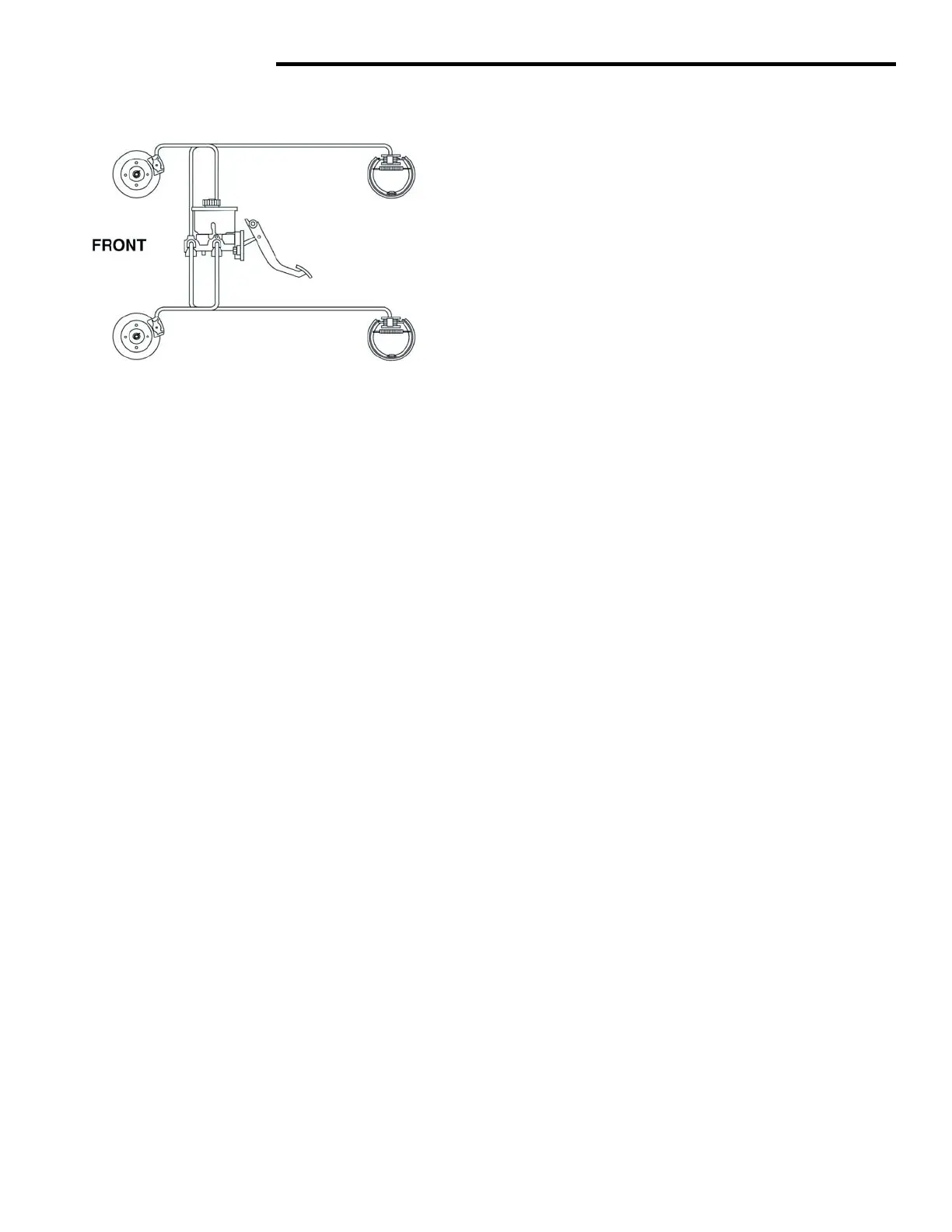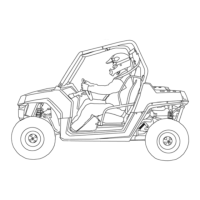4 - 2 BRAKES
GEM Service Manual November 2007
NOTE: Brake fluid tends to darken over time.
This is normal and should not be mistaken for
contamination.
BRAKE SYSTEM
4. If fluid level is abnormally low, look for evidence
of leaks at caliper, drum assemblies, hoses and
lines, and master cylinder.
5. If fluid appears contaminated, drain out a
sample to examine. System will have to be
flushed if fluid is separated into layers, or
contains a substance other than brake fluid.
The system seals and cups will also have to be
replaced after flushing. Use clean brake fluid to
flush the system.
6. Check park brake operation. Verify free
movement and full release of cables and lever.
Also note if vehicle was being operated with
park brake partially applied.
Fig. 1 Hydraulic Brake System
DESCRIPTION
7. Check brake pedal operation. Verify that pedal
does not bind and has adequate free play. If
pedal lacks free play, check pedal for being
loose or for binding condition. Do not road test
until condition is corrected.
The GEM uses a hydraulic brake system with front
disc and rear drum brakes. There is also a
mechanical parking brake that activates the rear
brakes only.
8. If components checked appear OK, road test
the vehicle.
OPERATION
9. During the road test, make normal and firm
brake stops in 10-20 mph range. Note faulty
brake operation such as low pedal, hard pedal,
fade, pedal pulsation, pull, grab, drag, noise,
etc.
Pressure on the brake pedal activates the brake
light switch and causes a piston in the master
cylinder to move inward, forcing brake fluid into the
front brake calipers and the rear wheel cylinders
through the brake lines. The pistons in each caliper
and wheel cylinders are forced out, causing the
front brake pads and rear brake shoes to come into
contact with the front brake rotor and the rear brake
drum. When the park brake lever is pulled up,
tension is placed on park brake cables attached to
the rear drum brake assemblies, thereby activating
them.
10. Attempt to stop the vehicle with the parking
brake only and note grab, drag, noise, etc.
PEDAL FALLS AWAY
A brake pedal that falls away under steady foot
pressure is generally the result of a system leak.
The leak point could be at a brake line, fitting, hose,
calipers or wheel cylinder. If leakage is severe, fluid
will be evident at or around the leaking component.
Internal leakage (seal by-pass) in the master
cylinder caused by worn or damaged piston cups,
may also be the cause of the problem.
DIAGNOSIS
1. Check the condition of tires and wheels.
Damaged wheels and worn, damaged, or
under-inflated tires can cause pull, shudder,
vibration, and a condition similar to grab.
LOW PEDAL
2. If complaint was based on noise when braking,
check suspension components. Jounce front
and rear of vehicle and listen for noise that
might be caused by loose, worn or damaged
suspension or steering components.
If a low pedal is experienced, pump the pedal
several times. If the pedal comes back up, worn
brake pads or brake linings, rotors, drums, or rear
brakes out of adjustment are the most likely
causes. The proper course of action is to inspect
and replace all worn component and make the
proper adjustments.
3. Inspect brake fluid level and condition. Note
that the brake reservoir fluid level will decrease
in proportion to normal lining wear.

